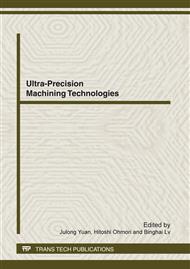p.94
p.99
p.105
p.110
p.115
p.121
p.126
p.132
p.137
Research on Soil Vibratory Cutting with ALE Finite Element Simulation Method
Abstract:
In order to study on soil vibratory cutting resistance reduction, the soil static cutting mechanics model and large deformation cutting of yield failure mode are studied in this paper. According to the interaction process of deep shovel-soil, the static cutting resistance changes of deep shovel was analyzed by finite simulation algorithm of ALE and soil-tools interaction 3D finite element model, and further the influences of the soil-cutting resistance to the vibration source type, the vibration frequency and vibration amplitude were studied. As an example of a compaction soil in tea garden, the law of soil resistance reduction influenced by vibration type and tool cutting-speed with difference vibratory cutting conditions was studied, the results show that the soil resistance reduced with the vibration frequency and amplitude increased, and vibration frequency, amplitude were taken to 25Hz, 14mm, soil cutting was up to minimum resistance, reduced about 22%. So, above-mentioned studies provided the basis of soil cutting resistance reduction with vibration.
Info:
Periodical:
Pages:
115-120
Citation:
Online since:
April 2012
Authors:
Keywords:
Price:
Сopyright:
© 2012 Trans Tech Publications Ltd. All Rights Reserved
Share:
Citation:


